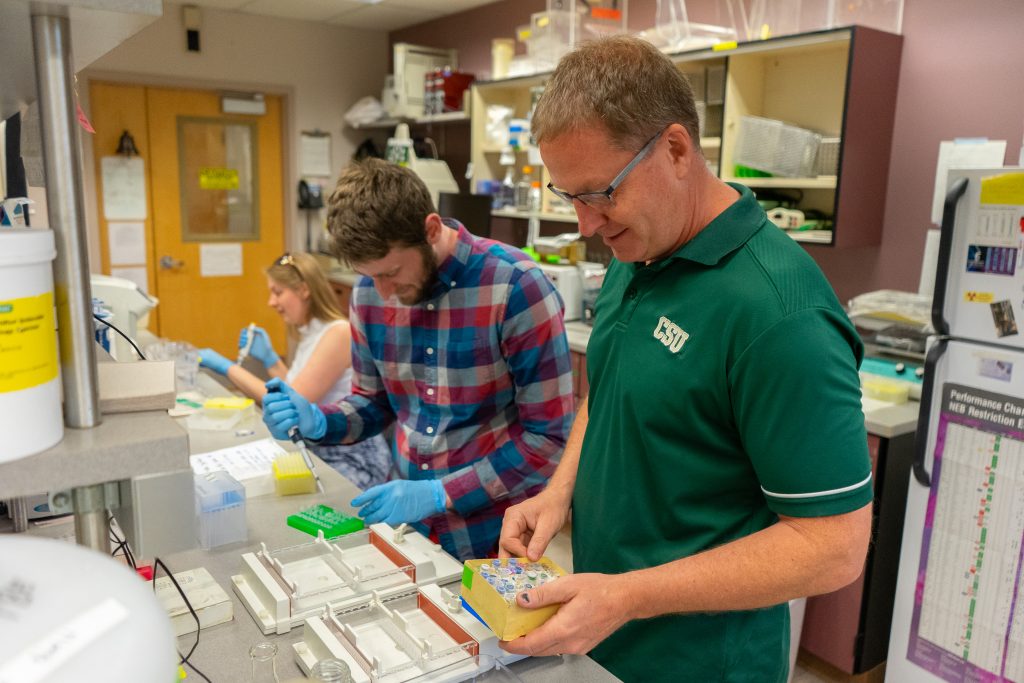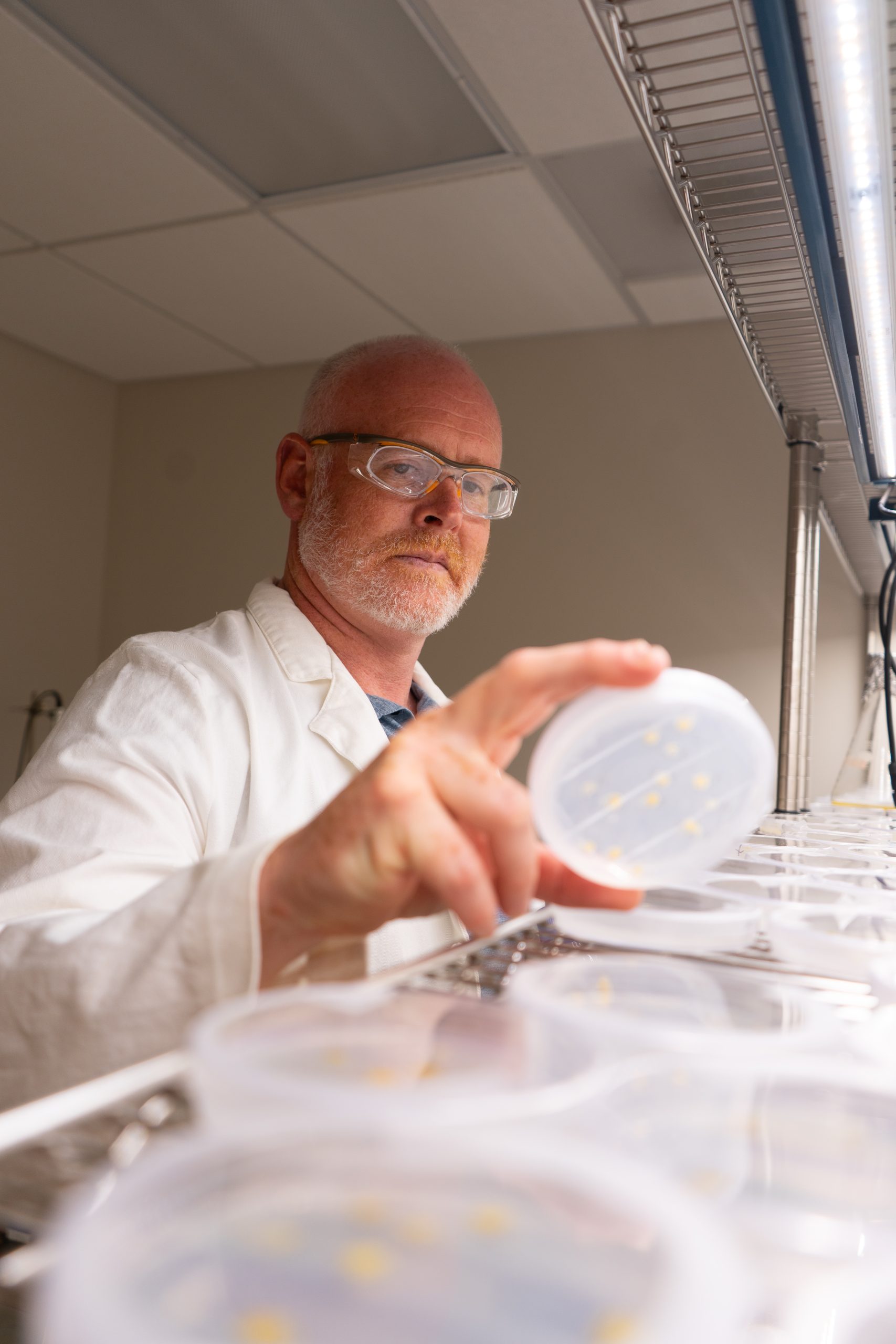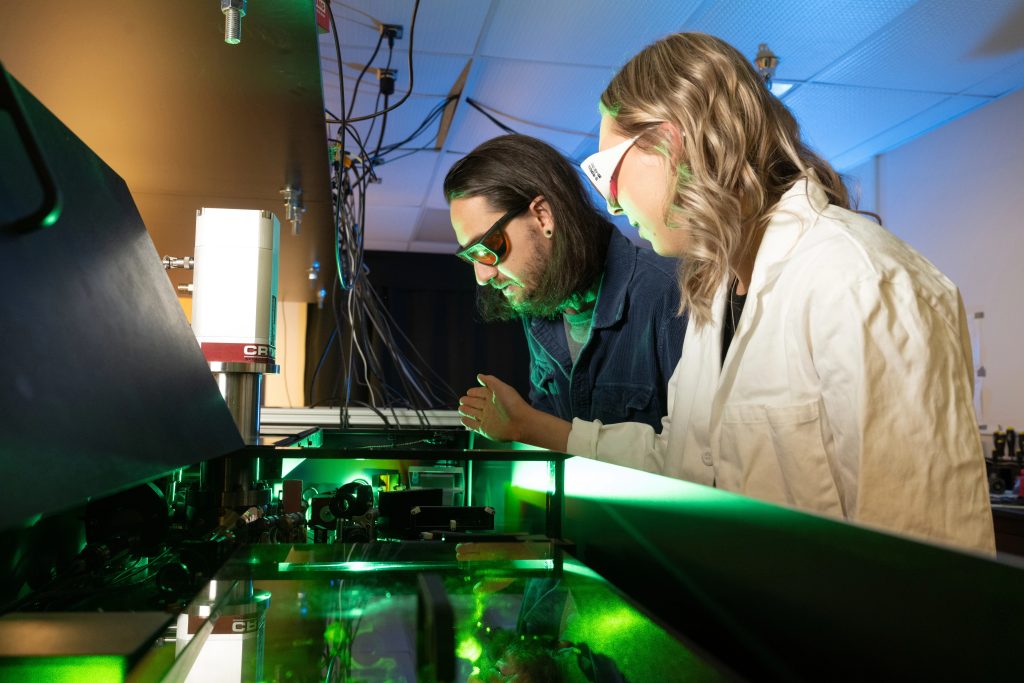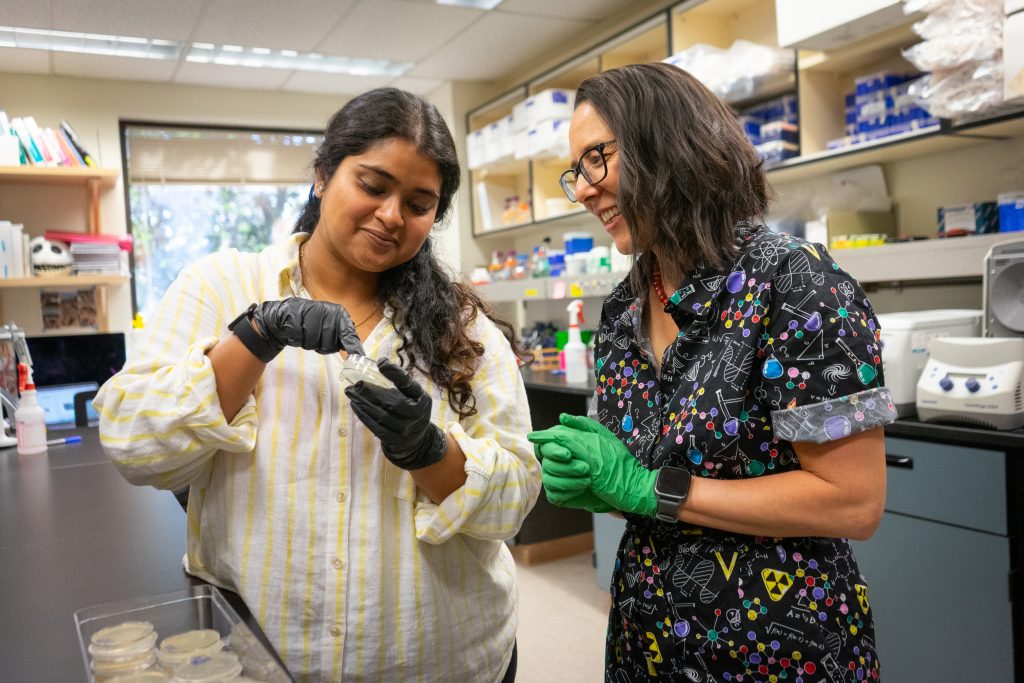The future of energy
To realize a more sustainable energy future, we need to diversify the sources of renewable energy and increase the efficiency of those sources. In the College of Natural Sciences, researchers are taking on this monumental challenge.
Modern with ancient roots

Archaea, named after the Archean Eon, ~2.5 billion-4 billion years ago, are fascinating single-cell organisms that often thrive in extreme environments, including in the depths of volcanic hot springs like those common to Yellowstone. They are also a potential key to unlocking a renewable bioenergy source.
Tom Santangelo, professor in the Department of Biochemistry and Molecular Biology, studies archaea that produce hydrogen as a waste product.
Hydrogen is
Tom Santangelo, professor,
seen as a fuel of the future, as a way to produce nonpolluting energy
Department of Biochemistry and Molecular Biology
“Hydrogen is seen as a fuel of the future, as a way to produce nonpolluting energy,” said Santangelo. “When you react hydrogen in the natural environment, it creates water and energy. Water is not a pollutant, and so we are not concerned about that being released into the environment.”
This process of generating biological hydrogen is called “dark fermentation,” the idea being that hydrogen can be produced by archaea through fermentation without the use of solar energy, representing a more efficient and low-energy route to biohydrogen.
Using genetic tools, including precise gene editing, Santangelo is working on increasing the efficiency of hydrogen production in the archaea he studies.
One of the major genetic advancements made in Santangelo’s lab has to do with electron movement. When electrons, a subatomic particle found in all atoms that acts as the primary carrier of electricity in solids, move around archaea cells they do so with the assistance of chaperon molecules. There are many different chaperon molecules that electrons can choose from, and their choice can impact where their electric energy goes.
Generally, electrons are agnostic in their choice, but Santangelo was able to use gene editing to direct electrons to “couple” with specific chaperon molecules, thus dictating the flow of energy.
“By altering electron movements inside the cell, the cell’s energy can be taken away from producing more cells and instead be spent producing the product we want, in this case hydrogen,” said Santangelo. “Now we have archaeal strains that generate approximately 100-1,000-fold more hydrogen than they normally would by manipulating their electron flux.”
In addition to continuing to increase the efficiency of hydrogen production, Santangelo plans to diversify the feedstock of archaea.
“If we need to feed them diamonds to make hydrogen then that is not very profitable,” he explained. “We would like to be able to feed them abundant waste products and inexpensive polymers to produce energy. The cheapest and most abundant natural polymer that we have on the planet is cellulose. We have proposed taking the existing metabolism of our cells and augmenting it such that they can digest cellulose and turn that excess plant material into hydrogen.”
Looking to algae
Oil and coal, our two largest sources of fossil fuels, exist because of photosynthesis that took place millions of years ago, was buried under the Earth’s surface, and is extracted today to create gas, electricity, and more. If modern technologies, such as cars, can run on the product of ancient photosynthesis, can we replace those energy sources with modern photosynthesis?
Algae are more
Graham Peers, professor,
efficient because they have found molecular workarounds that plants have not figured out yet.
Department of Biology
This is the question that Graham Peers, professor in the Department of Biology, is looking to answer with his research on this important process, and the solution may be found in an unexpected place – algae.
“We mostly look at algae because they are doing a better job with photosynthesis than plants,” said Peers. “Plants are inefficient with photosynthetic energy conversion; they are converting only about 1% of light energy into chemical energy used by the plant. However, algae are more efficient because they have found molecular workarounds that plants have not figured out yet.”
Peers is trying to discover how algae photosynthesize, how that process can be made even more efficient, and how it might be used as a carbon source for biodiesel.
“Some algae can use more of the solar spectrum, which is why some algae look brown instead of green,” said Peers. “They have figured out how to absorb that green light and use it for energy.”

Peers uses gene editing, synthetic biology, and metabolic engineering to create new strains of algae that have increased photosynthetic efficiency. With increased efficiency, algae and plants can produce more plant products with the same amount of resources.
“If all the crops in an agricultural field are growing at only 1% photosynthetic efficiency and you could double that to 2%, it doesn’t sound like much, but that is twice the amount of corn for the same amount of water and fertilizer,” explains Peers.
However, discovering the secrets of algae photosynthesis is not the end goal for Peers.
“I am looking forward to more of the translational research, taking these basic discoveries and aiming them toward an application,” said Peers. “I want to work with people who have expertise in the commercialization space. You can have a great idea on the basic science side but if the economics don’t work out, it’s gone.”
Doubling solar efficiency
Solar power technology uses solar cells to convert sunlight into electricity or storable fuels. Current solar panels are mostly made from silicon, a well-tested semiconductor material. However, silicon loses up to 40% of the energy it collects from sunlight in the form of heat waste.
Researchers in the Department of Chemistry are studying radical new ways to improve solar power and provide more options for the solar power industry to explore.
The discovery
Amber Krummel, associate professor,
required a ‘team science’ approach that brought together many different types of expertise, in computational, analytical, and physical chemistry.
Department of Chemistry
CSU chemists are proposing to make solar cells out of an abundantly available natural material called molybdenum disulfide. Using a creative combination of photoelectrochemical and spectroscopic techniques, the researchers conducted a series of experiments showing that extremely thin films of molybdenum disulfide display unprecedented charge carrier properties that could someday drastically improve solar technologies.
The experiments were led by chemistry Ph.D. student Rachelle Austin and postdoctoral researcher Yusef Farah. Austin works jointly in the labs of Justin Sambur and Amber Krummel, both associate professors in the Department of Chemistry. Farah is a former Ph.D. student in Krummel’s lab. Their work is published in Proceedings of the National Academy of Sciences.
The collaboration brought together Sambur’s expertise in solar energy conversion using nanoscale materials, and Krummel’s expertise in ultrafast laser spectroscopy to understand how different materials are structured and how they behave.
What they found was astoundingly efficient light-to-energy conversion. More importantly, the laser spectroscopy experiments enabled them to show why this efficient conversion was possible.

They found that molybdenum disulfide was so good at converting light to energy because its crystal structure allows it to extract the energy of hot carriers, highly energetic electrons that are briefly excited from their ground states when hit with enough visible light, and immediately convert it into photocurrent, rather than lose it as heat. This phenomenon is not present in conventional silicon solar cells.
The project was a collaboration with Professor Andrés Montoya-Castillo and Dr. Thomas Sayer of the University of Colorado Boulder, who contributed theoretical chemistry and computational modeling to help explain and verify the experimental data.
“The discovery required a ‘team science’ approach that brought together many different types of expertise, in computational, analytical, and physical chemistry,” Krummel said.
The results give scientists and engineers an avenue of inquiry to explore new approaches to tomorrow’s solar energy technologies.


